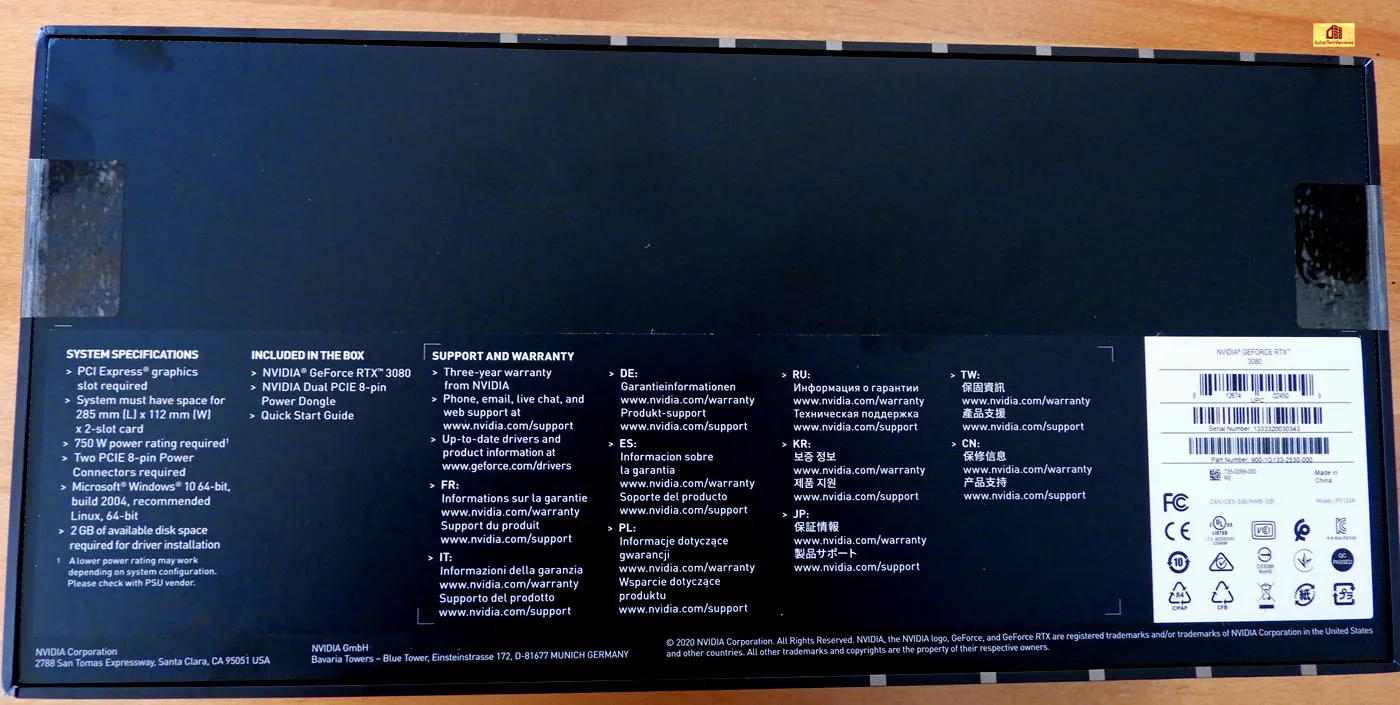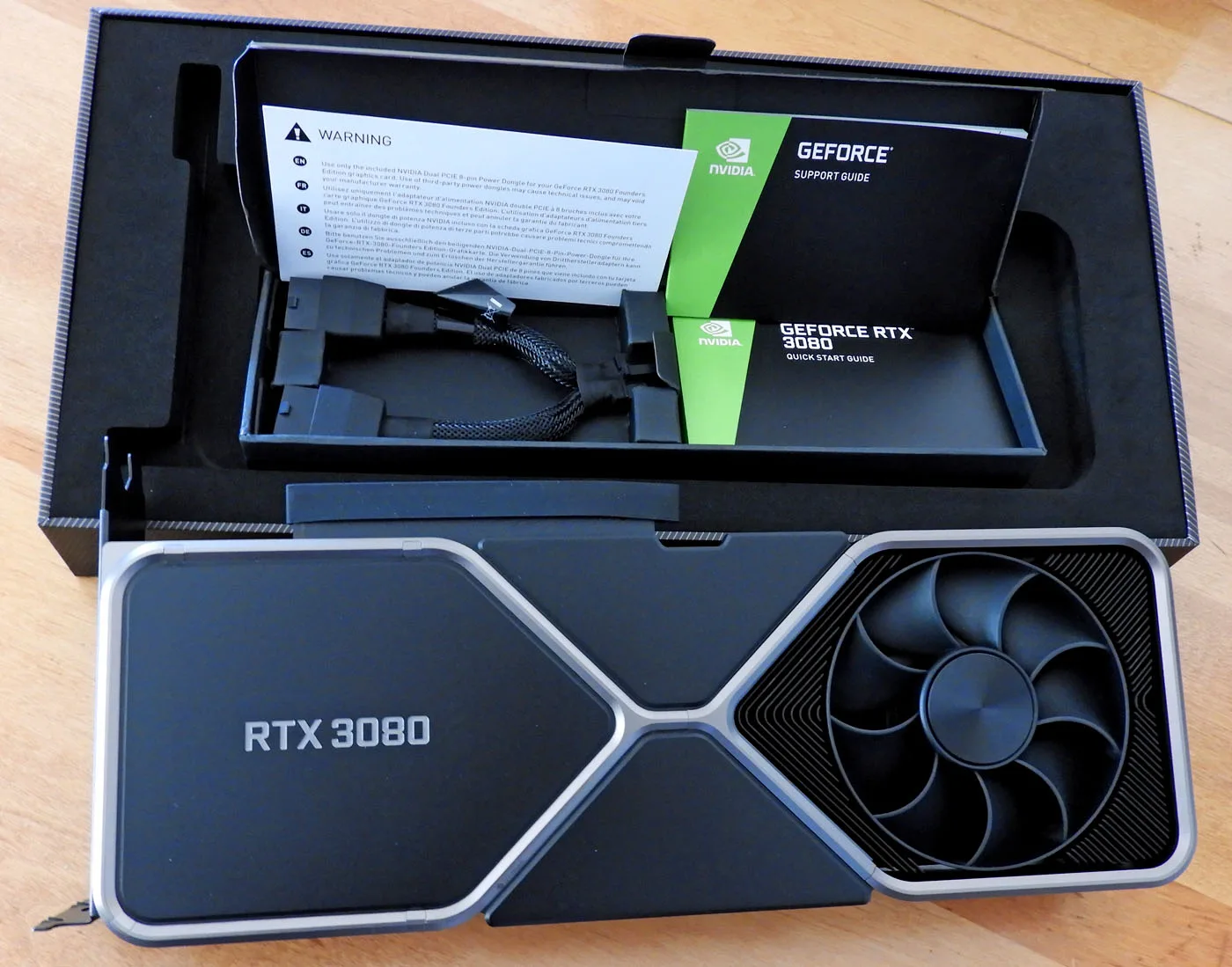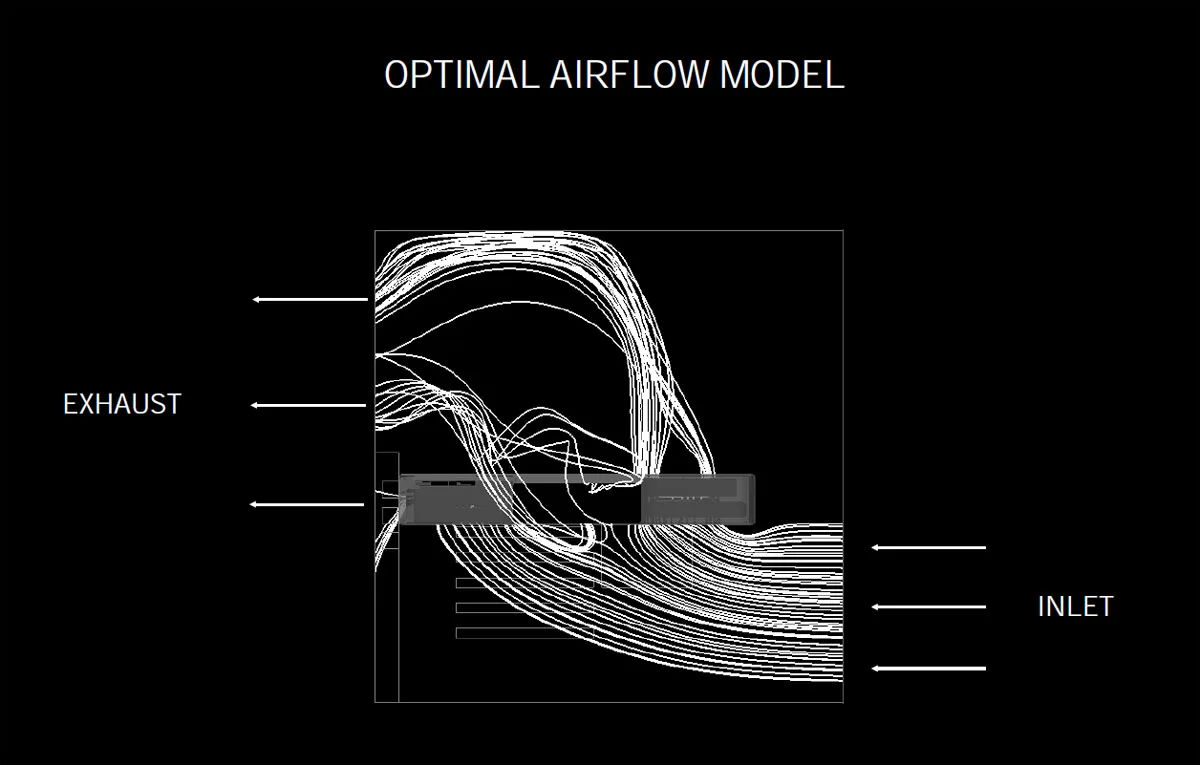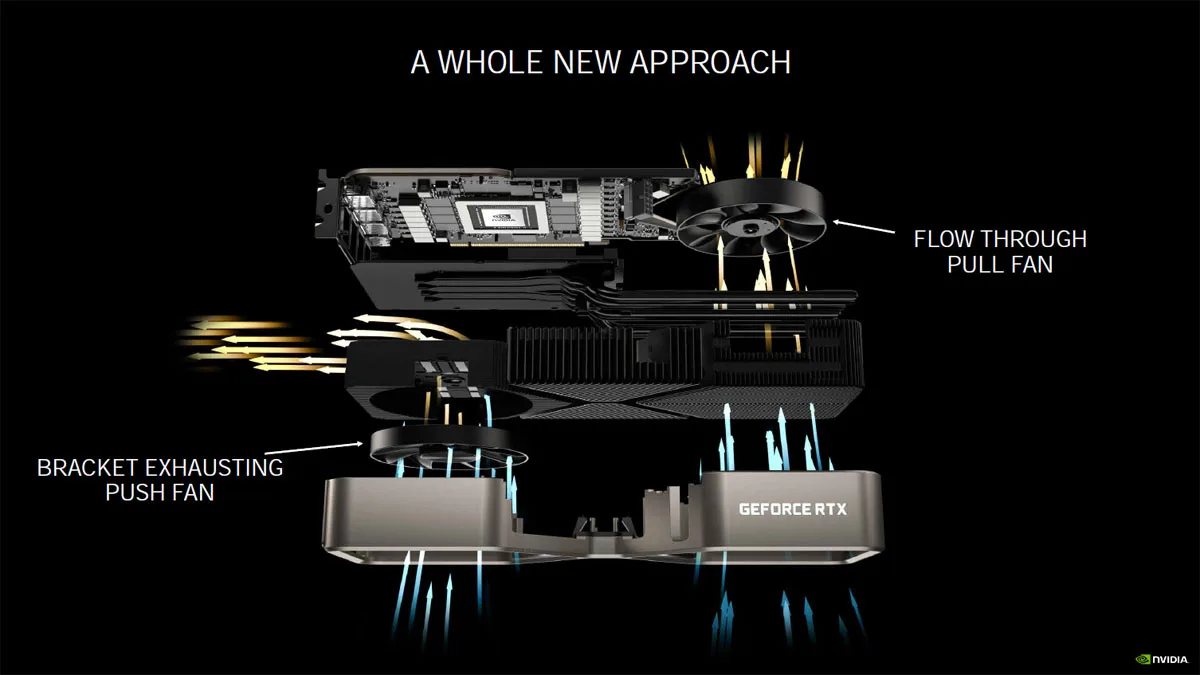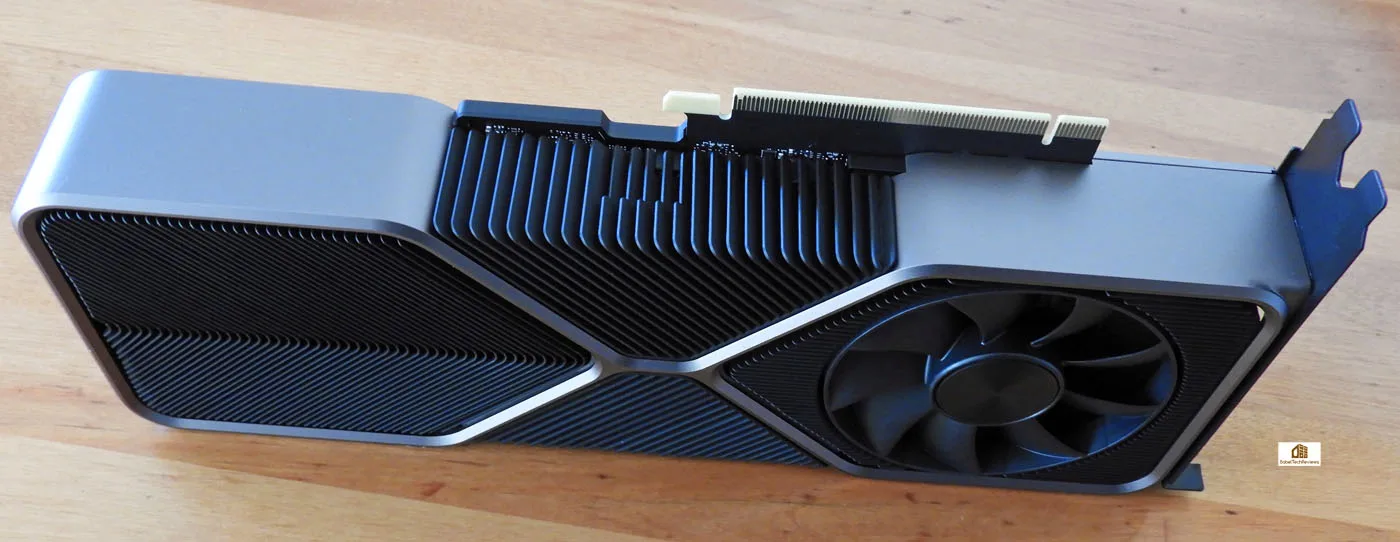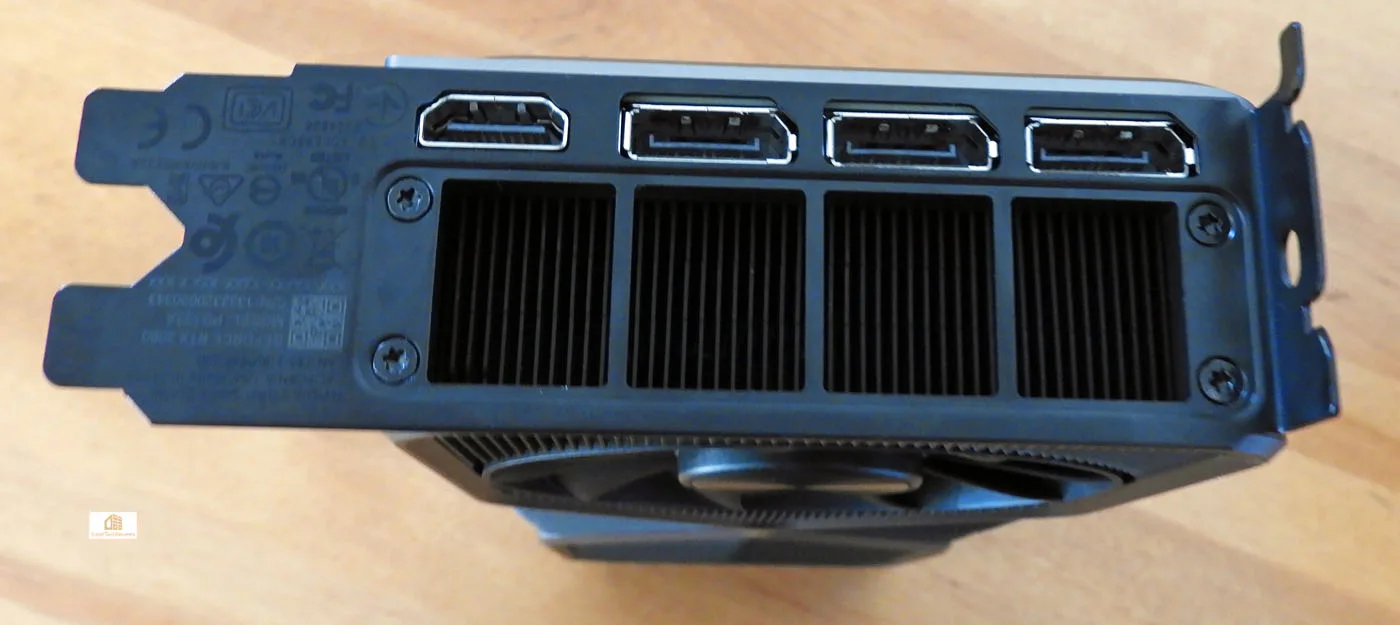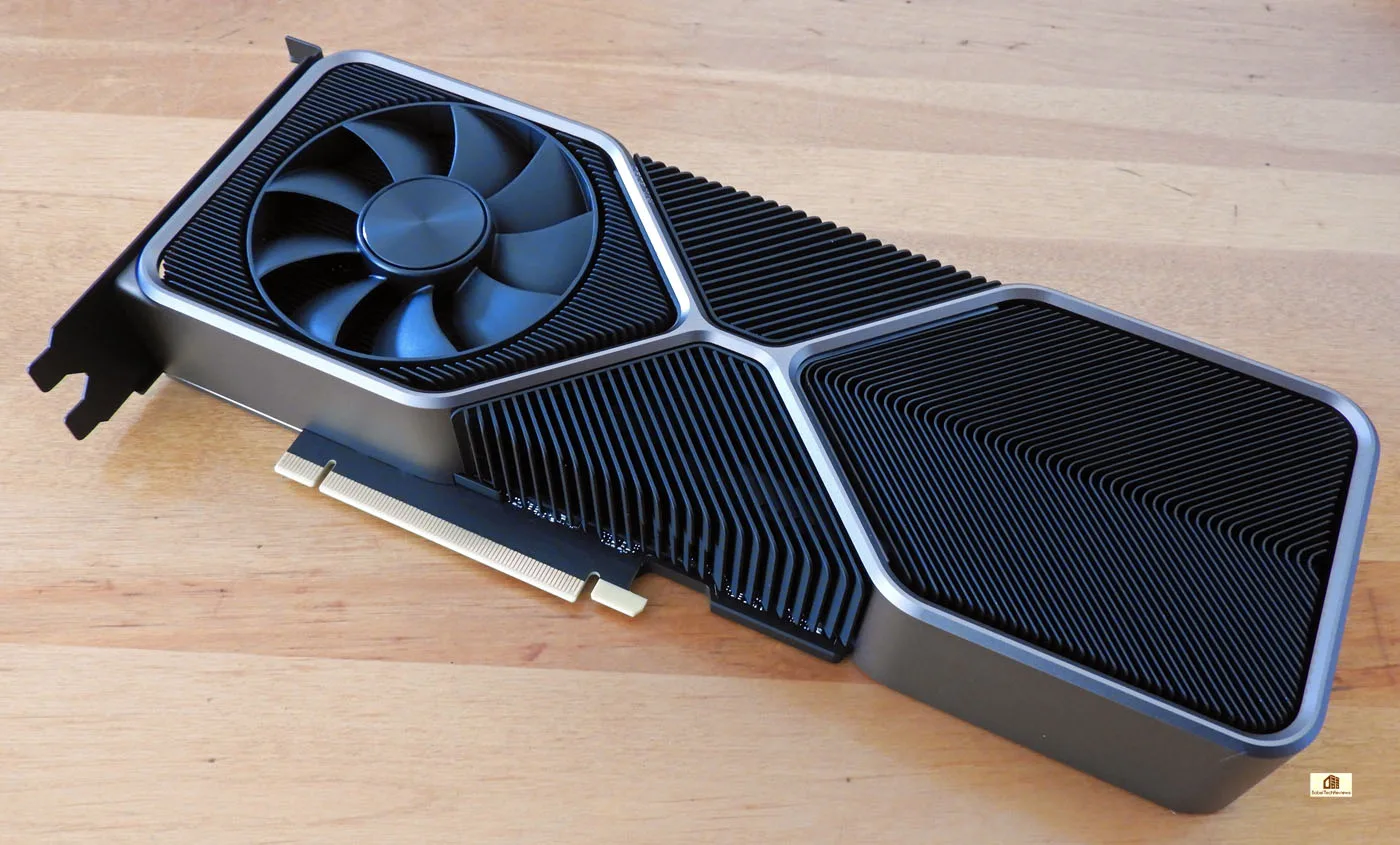The RTX 3080 Arrives at BTR – the Unboxing
The Ampere generation RTX 3080 arrived recently at BTR for exhaustive testing using our updated 33-game benchmark suite. It’s a completely redesigned Founders Edition that promises much, and we will bring you its performance results next week. We have already posted details about the Ampere architecture and the other two upcoming new cards, and for now, here is the card, unboxed.
Just like with the Founders Editions before them, the RTX 3080 comes in a similar “shoebox” style which may be used to display the cards. The box difference is that the RTX 3080 inside lays flat at a slight incline for display instead of vertical, so the Ampere RTX 3080 box is thicker and also about an inch longer than the Turing and Pascal generations boxes. The RTX 3080 is itself almost an inch longer than the RTX 2080 SUPER, and it weighs more.
Interestingly, as pointed out by a Redditor this week, the logo on the card is slightly different from the box logo as the “8” on the card appears to be upside-down as a rare typo, or perhaps it is intentional as the symbol ∞ (infinity) rotated 90 degrees left.
The system requirements, contents, and warranty information are printed on the bottom of each box. The RTX 3080 requires a 750 W power supply unit, and the case must have space for a 285mm (L) x 122mm (W) two slot card. The thick packing of the box protects the card.
Inside the box, beneath the card, are warnings, a quick start guide and warranty information, plus the 12-pin to dual PCIe 8-pin dongle that will be required to connect the RTX 3080 to most PSUs.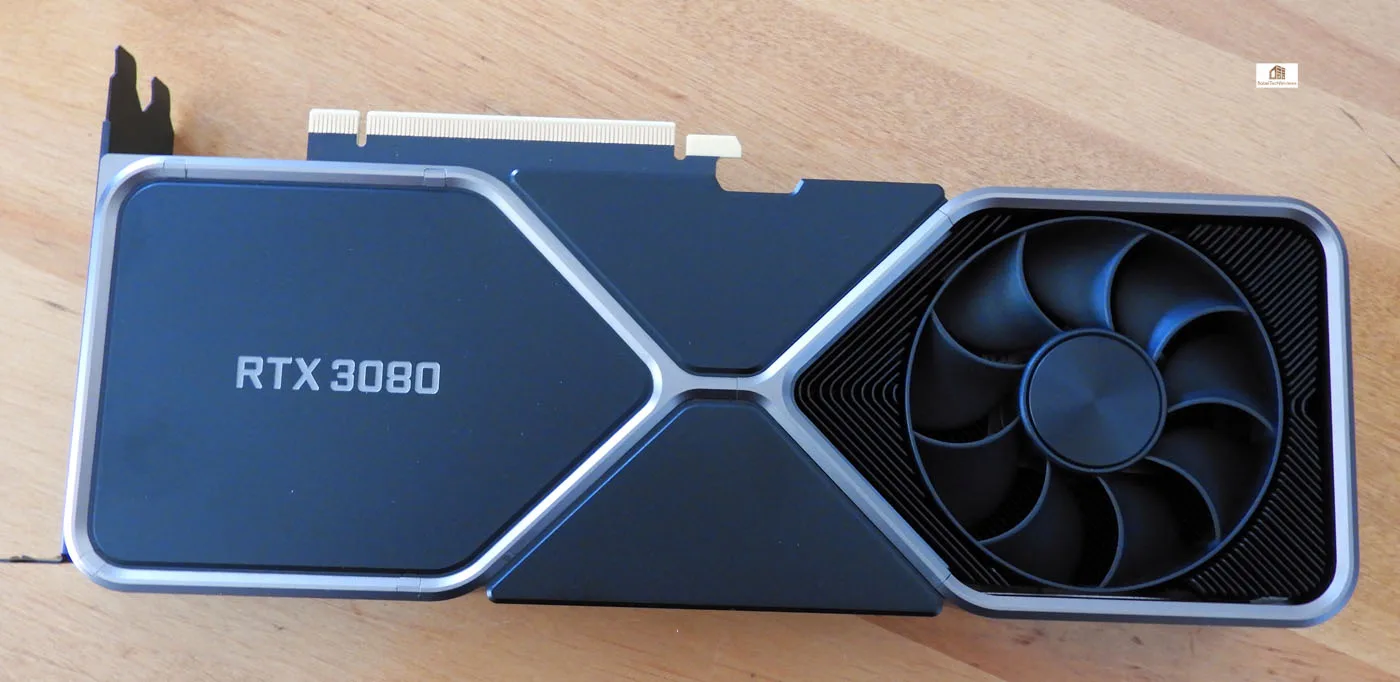
A completely redesigned shroud creates a new look for the RTX 3080 Founders Edition to provides a premium and solid heavy feel to its industrial design. Turning the card over, we see a completely unique design with a fan also on the other side.
This card is designed to run cool, and by shining a light from behind, we can see the card is mostly all heatsink fins.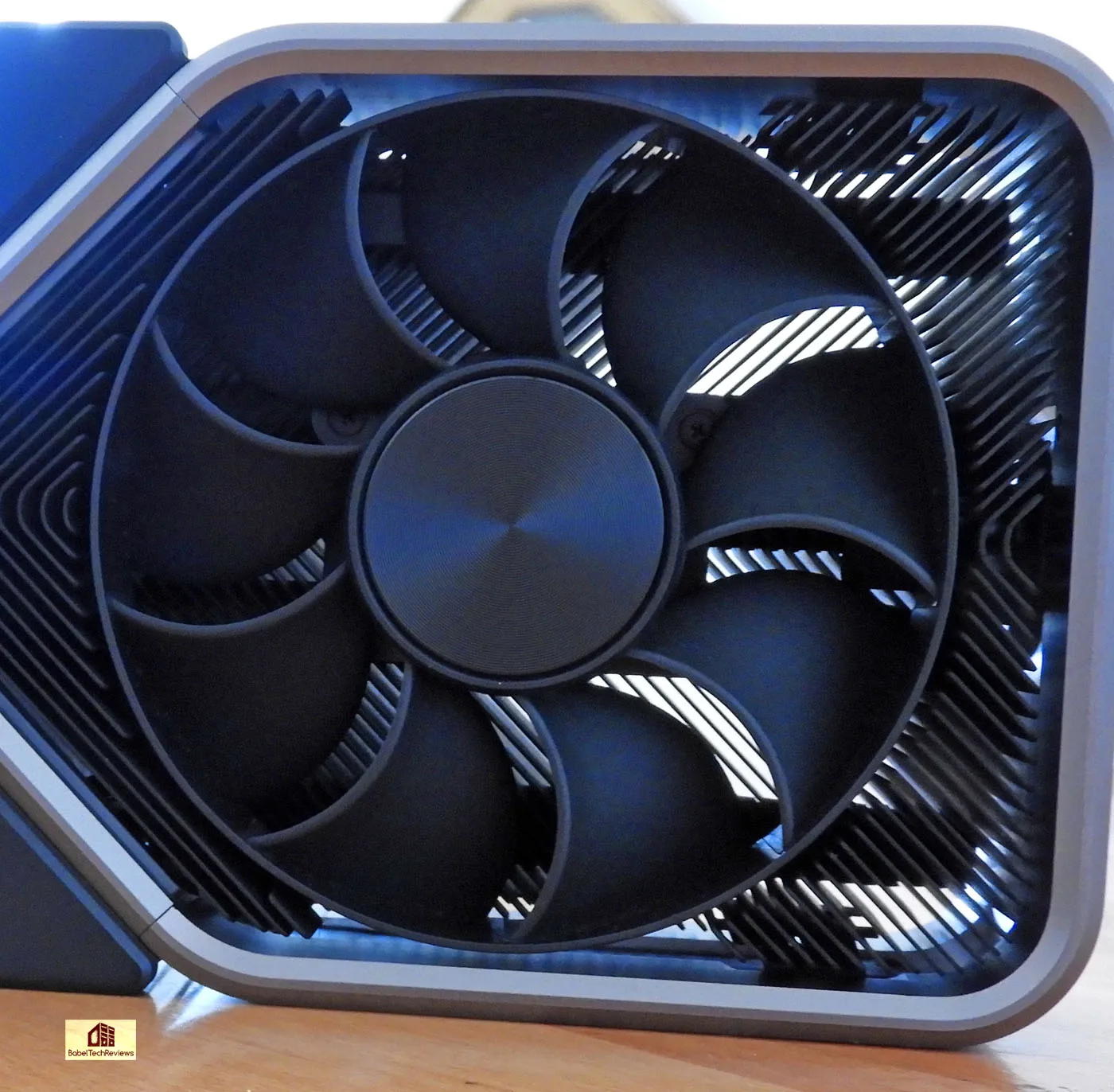
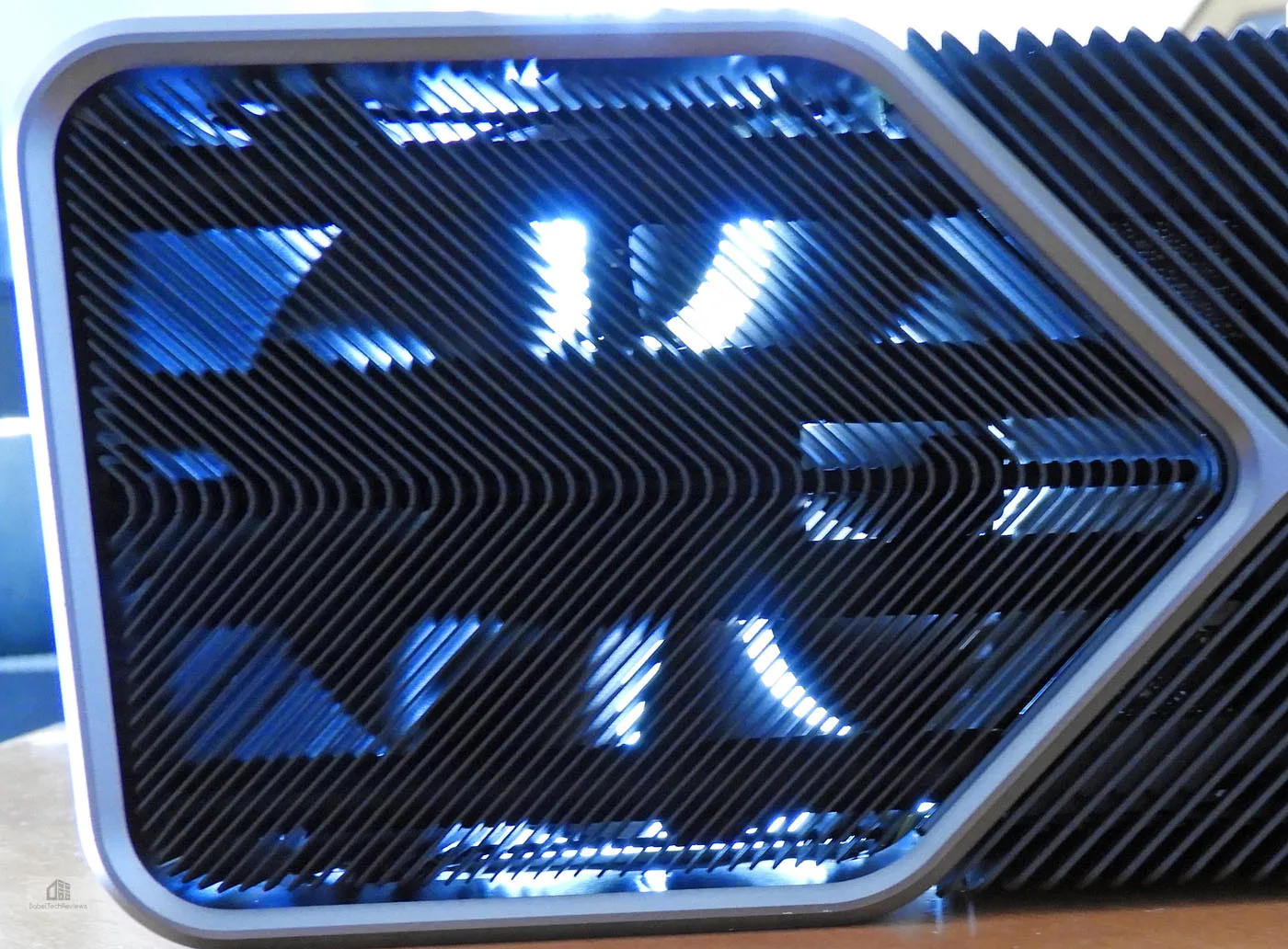
It looks like dust buildup can be blown out of the cooling fins with compressed air more easily than with former flagship Founders Editions which tend to run hot and then noisy. The RTX3080 and the RTX 3090 are designed to take full advantage of the way most PCs cool, but it may increase the case temperature and thus the CPU temperature in small form factor PCs or in low airflow cases.
There is very large surface area for cooling so the heat is readily transferred to the fin stack and the dual fans exhaust the heat out of the back and the top of the card into the case airflow. This is necessary because the RTX 3080 needs to dissipate 320W.
Instead of using a regular backplate, the RTX 3080 has a fan on each side designed to work together for optimum cooling. It looks good inside our case in our opinion.
The RTX 3080 uses a custom 12-pin connector which is designed to be used with the next generation of PSUs and will work with the included dongle as long as the PSU accepts 2×8-pin PCie connections. Frankly, we are somewhat unhappy with the way two rather ugly PSU cables look hanging from the middle of the card, and wish there was another placement possible for neater cable management. But that is just a nitpick and a design choice in our opinion.
The IO panel has a very large air vent with four connectors. The connectors are similar to the Founders Edition of the RTX 2080 Ti, but the VirtualLink connector for VR is not offered any longer since no HMD manufacturers are using it. Three DisplayPort 1.4 connectors are included, and the HDMI port has been upgraded from 2.0 to 2.1 allowing for 4K/120Hz or 8K/60Hz over a single HDMI cable.
In our opinion, the RTX 3080 Founders Edition is a beautiful card with a very unique style that appears to be focused on great industrial design and a complete rethinking of cooling a GPU inside a PC. However, disassembly looks rather difficult and it may give pause to some enthusiasts who may have custom water cooling in mind.
Many questions come to mind. Does the card or its logo light up? Does it run cool or run rather hot and noisy like the RTX 3080 Ti Founders Edition when it is under full load. And above all, what is the RTX 3080 performance like compared with NVIDIA’s top cards, the RTX 2080 Ti, the RTX 2080 SUPER, and also versus the flagship card of the Pascal generation, the GTX 1080 Ti. We will be answering these questions and more for ourselves now, and we will bring our readers a complete performance review next week featuring 33 games at three resolutions – 1920×1080, 2560×1440, and 3840×2160.
Stay tuned to BTR!
(Very) Happy Gaming!


